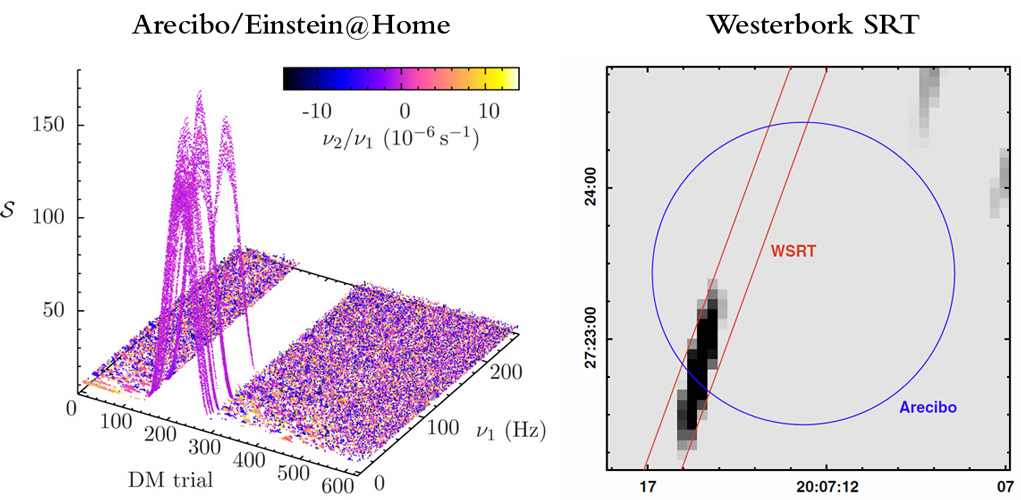 © ASTRON
© ASTRON
Many of you will know that hitching a ride on both Voyager 1 and 2 is a Golden Record - a kind of time capsule that was placed on the side of the Spacecraft just before launch in 1977. The record includes sounds and images of the planet Earth, and representations of human civilisation such as music, a map of nearby Pulsars and greetings in 56 different languages. The idea of the record originated with the late, great Carl Sagan - just in case Voyager was found by another space-faring civilisation during its long sojourn through interstellar space. It could be a long wait - even at its current record speed, Voyager 1 will not make a pass by another star system for another 40000 years. It's expected that the signal from the Voyagers (powered by three large radioisotope thermoelectric generators) will be detectable until the end of this decade - it might make an interesting target for the SKA in the decade thereafter. The full set of images is available at (for example): http://webodysseum.com/art/116-images-of-the-voyager-golden-record/
What you may not know about this Golden Record, is that the Westerbork Synthesis Radio Telescope (WSRT) is one of only 116 images included on the record. The image above shows this photo (top right), along side the spacecraft itself and the record. Note that the Voyager record, really is a record - not an early CD - all the information on the disc is recorded in the audio frequency range, and the disc is designed to spin at only 16 2/3 RPM, requiring 12 seconds to play back the low-resolution images. In any case, it is nice to know that a little bit of ASTRON and the WSRT is on board the Voyager spacecraft, as they boldly go where no man has gone before...
 © LEAP collaboration
© LEAP collaboration © ASTRON
© ASTRON © Michel Arts
© Michel Arts © Roy Smits & Jodrell Bank Centre for Astrophysics
© Roy Smits & Jodrell Bank Centre for Astrophysics © ASTRON & SKA
© ASTRON & SKA © Ralph Eatough / MPIfR
© Ralph Eatough / MPIfR © Astro-Jeunes
© Astro-Jeunes © NOVA-ASTRON
© NOVA-ASTRON © HALOGAS collaboration
© HALOGAS collaboration © Arno Schoenmakers, Jurjen Sluman, the Muppets
© Arno Schoenmakers, Jurjen Sluman, the Muppets © Pieter Benthem
© Pieter Benthem © ApJ
© ApJ © Summer students 2013 / Mike Garrett / Carmen Toribio
© Summer students 2013 / Mike Garrett / Carmen Toribio © Minju Lee, John McKean, Adam Deller, Javier Molden
© Minju Lee, John McKean, Adam Deller, Javier Molden © Gabriele Surcis, Maria Grazia Blasi
© Gabriele Surcis, Maria Grazia Blasi © bennema
© bennema © MCC
© MCC © Astron
© Astron © ASTRON
© ASTRON